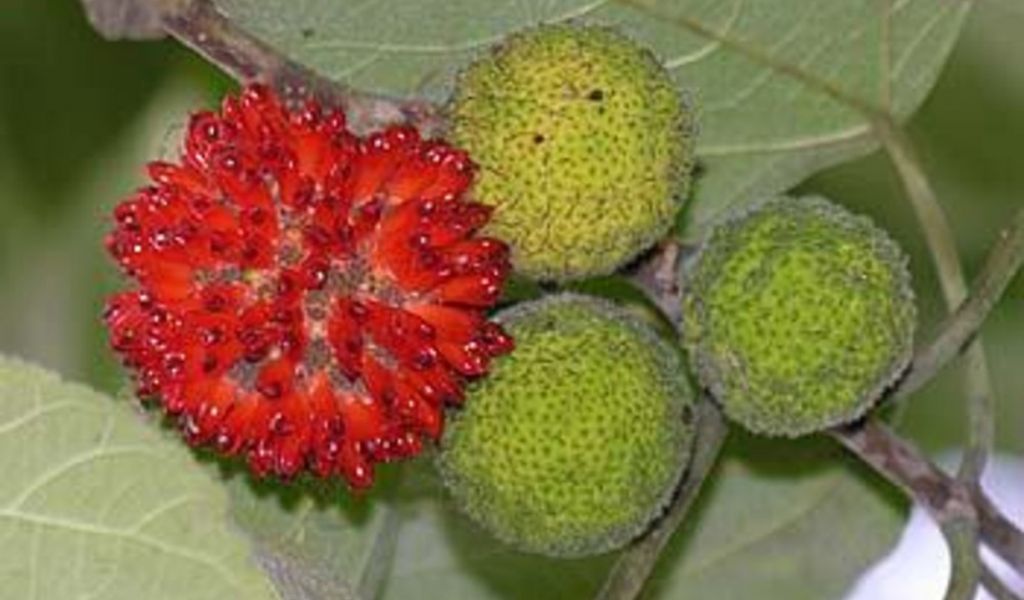ປໍສາ / Paper Mulberry
APA 6th ed. ປໍສາ / Paper Mulberry. (2019, December 11). Retrieved from https://www.phakhaolao.la/kb/0000011
MLA 8th ed. ປໍສາ / Paper Mulberry. Pha Khao Lao, 11 December 2019, https://www.phakhaolao.la/kb/0000011.
Chicago 17th ed. Pha Khao Lao. 2019. "ປໍສາ / Paper Mulberry." Published December 11, 2019. https://www.phakhaolao.la/kb/0000011.

Broussonetia kazi Siebold ex Blume
Broussonetia maculata Steud.
Broussonetia nana Bureau
Broussonetia navicularis Lodd. ex Bureau
Burmese: malaing, thale, dalaing
Vietnamese: duong, chu dao phu, meh ay
Cambodian: rong. Chinese: chu tao shu, gou shu
English: paper mulberry, tapa-cloth tree
Po Sa is a deciduous, small shrubby tree with a broad spreading crown, 3-20 m tall and 5-50 cm in
DBH. The bark is thick, smooth and greyish, with cream-white latex. The leaves are rough and vary in shape: they are deeply lobed in young trees but egg- shaped in older trees, with jagged edges. They measure 7-20 cm long x 6-8 cm wide with a leafstalk of 3-10 cm. The young green branches are covered with hair and the older bark is brown and fibrous. Older branches are thick and grey-brown in colour, but are weak and vulnerable to wind damage. The flowers on male trees are yellow-white catkin spikes, 10-15 cm long, while female inflorescences are ball-shaped heads with a diameter of 1.2-1.8 cm. The juicy round orange fruit has purple hair, is 1-3 cm in diameter and contains many small dark red seeds, each hanging on a fleshy 1.2 cm stalk.
Po Sa bark has for centuries been used locally to make paper and clothing. Japanese washi paper is made from a similar Broussonetia spp, which is also made into wedding suits. In Laos a range of souvenir items are produced locally while the bark and fibres are exported. In Xieng Khouang paper altars and umbrellas are made and used in religious ceremonies. In Luang Phabang the ash from burned stems is used for bleaching pulp during handmade paper making, and wastewater from this process is later used as fertilizer. The leaves provide good fodder for pigs and cattle while seeds contain an oil used in Vietnam for soap, wax and lacquer production. Locally the invigorating and edible fruit, the leaves, bark and roots are used in medicines to treat dysentery. Kidney problems can be treated with a mix of roots, boiled rice and black sugarcane. The wood is used for firewood and to cultivate mushrooms (Het Hou Nou or Auricularia spp.).
